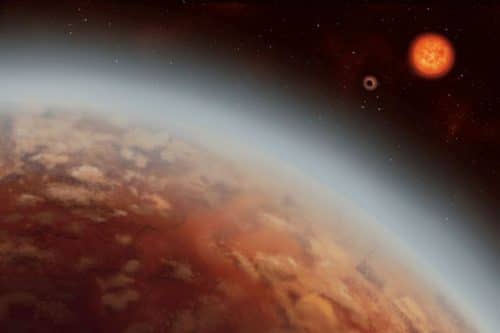Astronomers who detected water vapor in the atmosphere of the planet K2-18b say that this is a key discovery in the search for extraterrestrial life

Since the discovery of the first extrasolar planet in the XNUMXs, astronomers have steadily advanced in their ability to identify planets that are in their stars' habitable zones, where conditions could lead to the formation of liquid water and the spread of life.
The findings of the Kepler satellite, which discovered about two-thirds of all the planets known so far, indicate that 20-5 percent of the small planets - the size of the Earth or larger, known as super-Earths, are in the habitable zones of their stars. This is a large range due to the uncertainty in calculating the habitable zone around stars of different types, but in any case, it is a significant amount. However, despite this abundance, probing the atmospheric conditions and properties on each of these planets has been tricky… until now.
A new study conducted by Professor Björn Benneke of the Institute for Extrasolar Planet Research (iREx) at the University of Montreal in Canada, her doctoral student Caroline Fiola and fellow scientists report the detection of water vapor and possibly even liquid water clouds in the atmosphere of the planet K2-18b. This planet is nine times more massive than our Earth and is in the habitable zone of the star it orbits. It is an M-type star smaller and cooler than our Sun (a red dwarf), but due to K2-18b's proximity to its star, the planet receives almost the same amount of total energy from its star as our Earth receives from the Sun. The planet is 110 light years away, it is twice the size of Earth and its year lasts 33 Earth days.
The similarity between K2-18b and Earth suggests to astronomers that this planet may have a water cycle that could allow water to condense into clouds and fall as liquid rain. This discovery was made possible by a combination of eight transit observations - the moment when a planet passes in front of its star - taken by the Hubble Space Telescope.
The existence of K2-18b was first confirmed by Prof. Banke and his team in a 2016 paper that relied on data from the Spitzer Space Telescope. The planet's mass and radius were then determined by former doctoral student Ryan Cloutier. These promising initial findings encouraged the iREx team to collect follow-up observations of the intriguing world. "
Today, scientists estimate that the thick gas mantle of K2-18b probably prevents the existence of life as we know it on Earth. However, the study shows that even these relatively low-mass planets, which are therefore more difficult to study, can be studied using astronomical instruments developed in recent years. By studying these planets that are in their star's habitable zone and the right conditions for liquid water, astronomers can move one step closer to directly detecting signs of life beyond our solar system.
The discovery represents the biggest step yet taken towards our ultimate goal of discovering life on other planets, to prove we are not alone. Thanks to our observations and climate modeling of this planet, we have shown for the first time that its water vapor can condense into liquid water, Benanke said.
More of the topic in Hayadan:
- How many Earth-like planets orbit Sun-like stars in the habitable zone?
- The first historical model for the formation of life received a significant boost
- NASA scientist "In 20-30 years we will be able to discover life in space, but not necessarily intelligent (video)
- The closest planet to the solar system that is in the habitable zone of its solar system has been discovered

2 תגובות
Typos happen
Interesting article, it's just a shame you don't read before pressing "enter".
There is no "number of Earths". In English "Super Earth" translate, or write super (star) Eretz.
I was glad to help